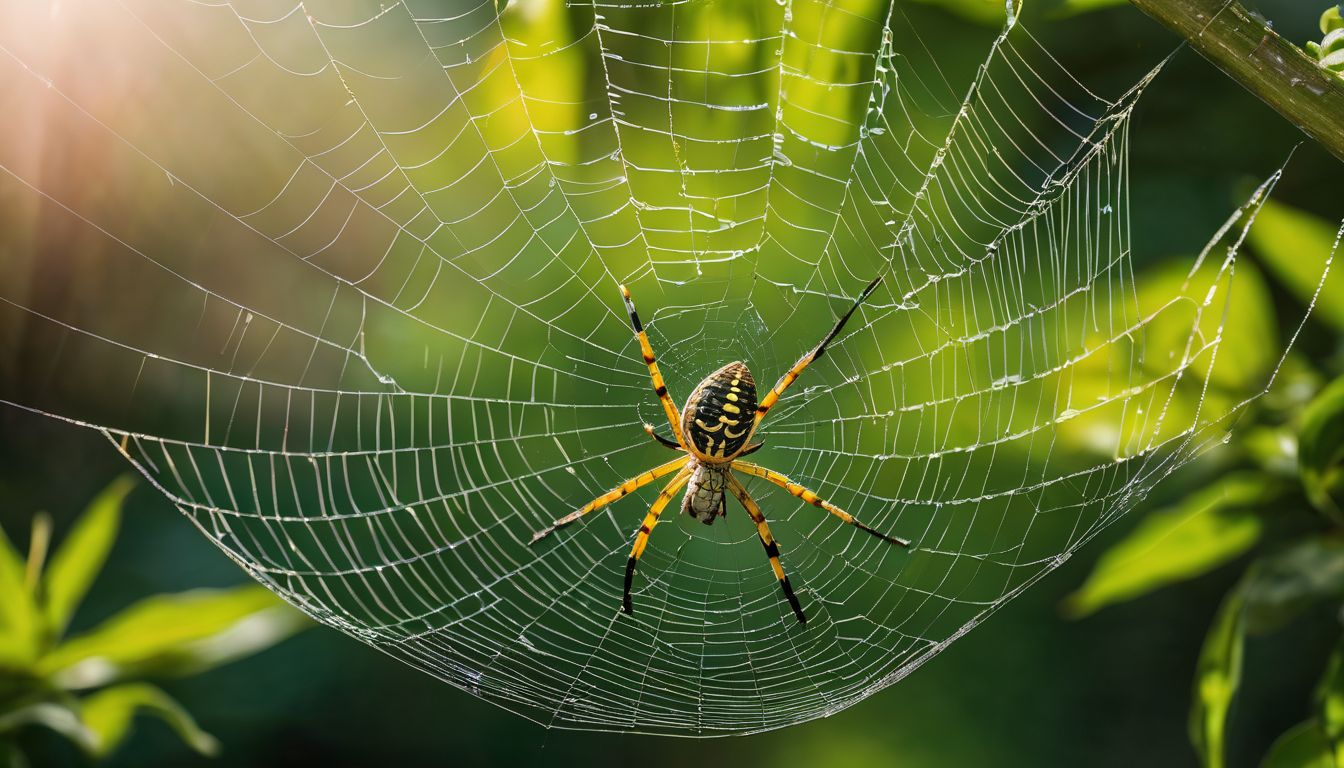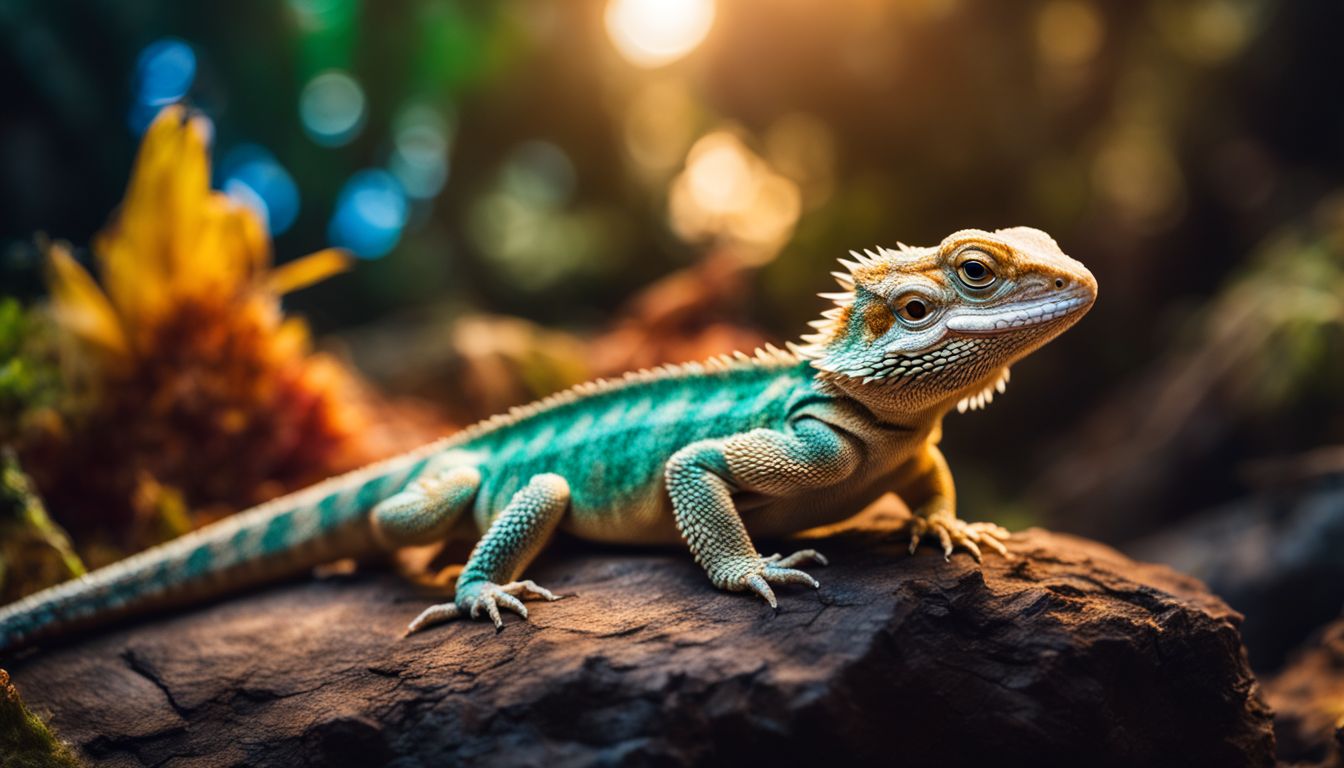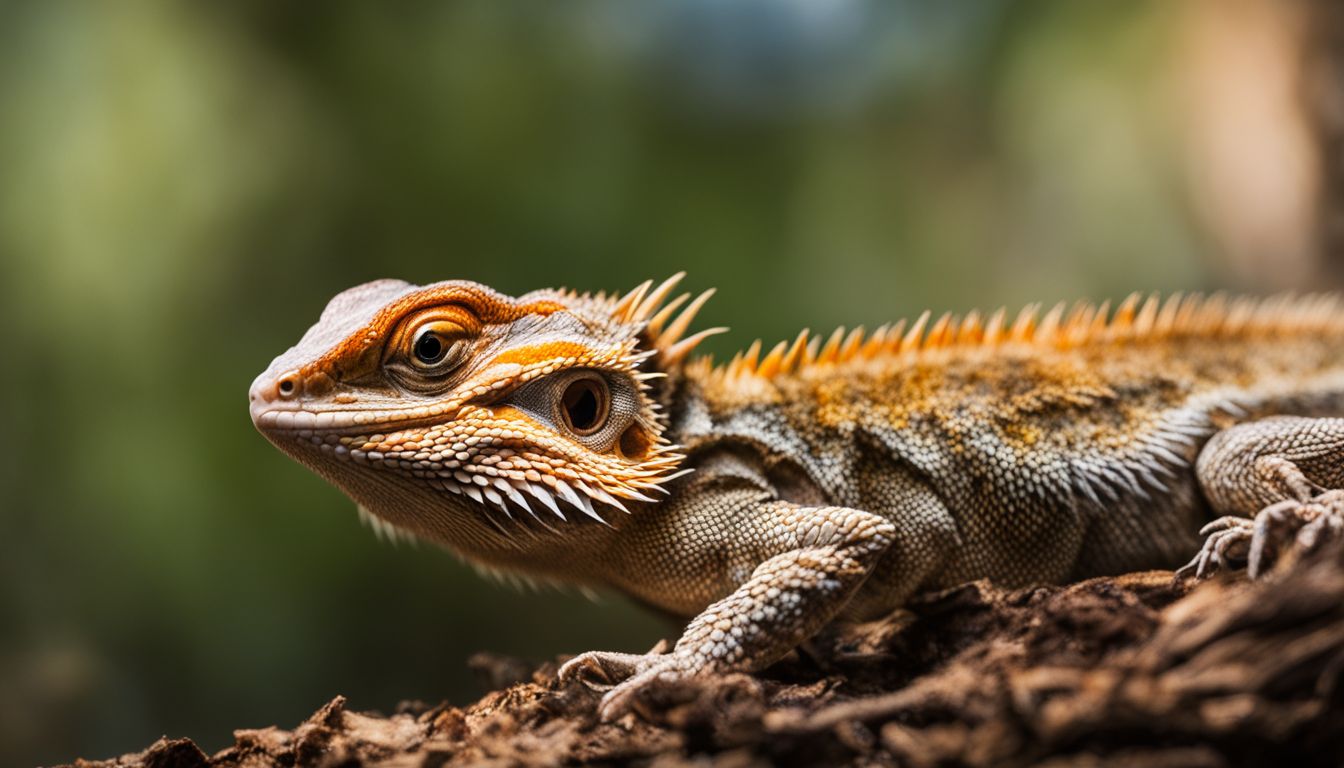Many people wonder if all spiders have eight legs, as we often see. It’s a common mistake to think some spiders might only have six legs. Our blog post will clear up confusion about spider leg counts and explain what sets them apart from insects with fewer limbs.
Let’s unravel the mystery together!
Key Takeaways
- Spiders actually have eight legs, not six, which sets them apart from insects that typically have six legs.
- Understanding the unique anatomy of spider limbs is crucial in differentiating them from insects and other arthropods, as well as appreciating their specialized predatory behaviors.
- While some spiders exhibit ant mimicry with only six legs, most true spiders possess the distinctive eight-legged body plan that aids in their movement, predation, and survival in various ecosystems.
Debunking Myths: Understanding Spider Limbs
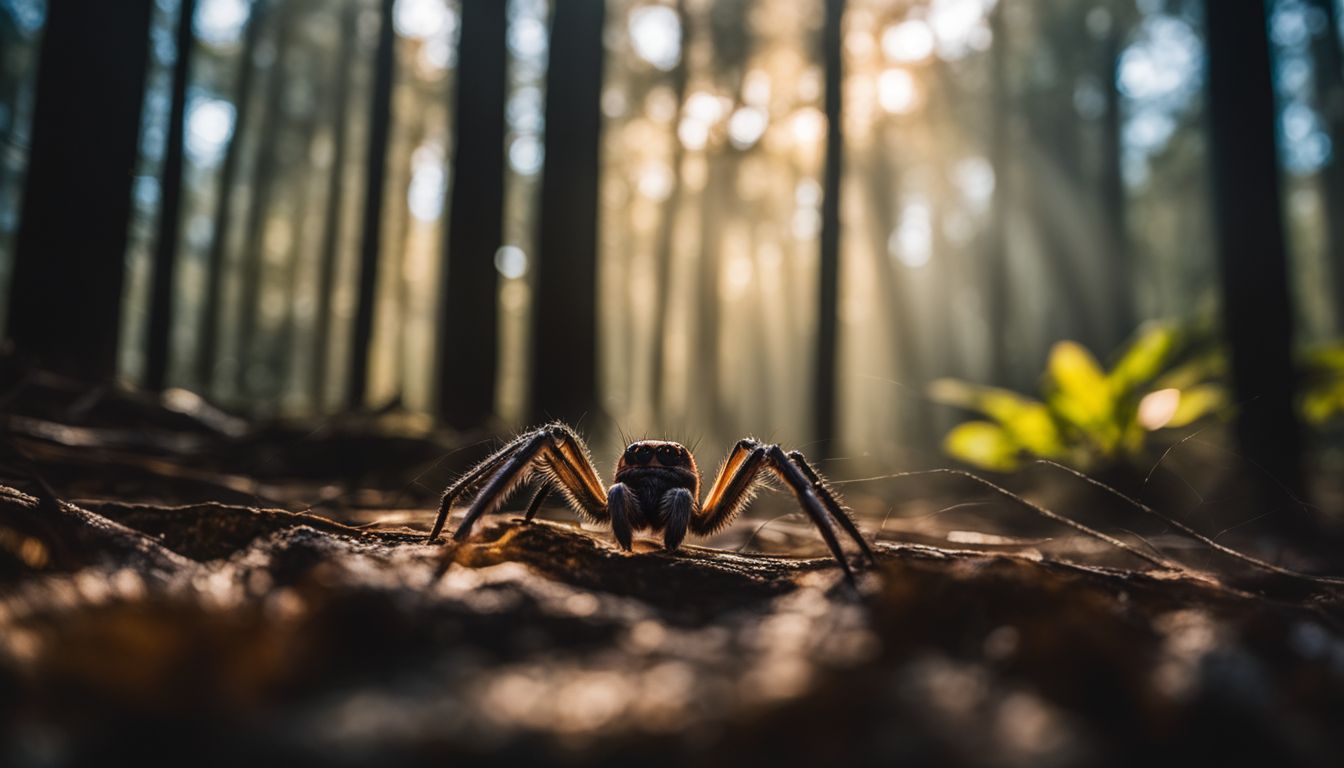
Spiders are often mistaken to have six legs, when in fact, they actually have eight. This common misconception stems from the confusion between spiders and insects, which do indeed have six legs.
Understanding the true anatomy of spider limbs is essential in differentiating them from other arthropods.
Spiders and the Eight-Legged Reality
Spiders are famous for having eight legs, which sets them apart from insects with only six. These extra pair of limbs help spiders in ways that might surprise you. They can climb up walls and even dance during mating rituals because of their eight agile legs.
Each leg has several parts like the femur, tibia, and metatarsus, all vital for movement and survival.
While some folks might mix them up with other creatures that also sport eight legs, such as ticks or scorpions, spiders belong to their own group called arachnids. Their unique body plan is more than just a random design; it’s a family trait passed down from spider parents throughout countless generations! Moving on from their impressive limb count leads us into exploring the differences between these fascinating arachnids and insects.
Six-Legged Creatures: Insects, Not Spiders
Insects are the ones with six legs. They also have bodies divided into three parts: head, thorax, and abdomen. Insects like ants, bees, and ladybugs walk around on their six legs. They often have two sets of wings and antennae on their heads.
Many people mix up spiders with insects because they both have many legs. But it’s important to remember that all true spiders have eight legs. This is a big clue that helps tell them apart from insects.
Spiders are part of the arachnids group – this includes scorpions too! Their bodies consist of two main sections and they don’t have antennas or wings like insects do.
Common Confusions: Insects vs. Spiders
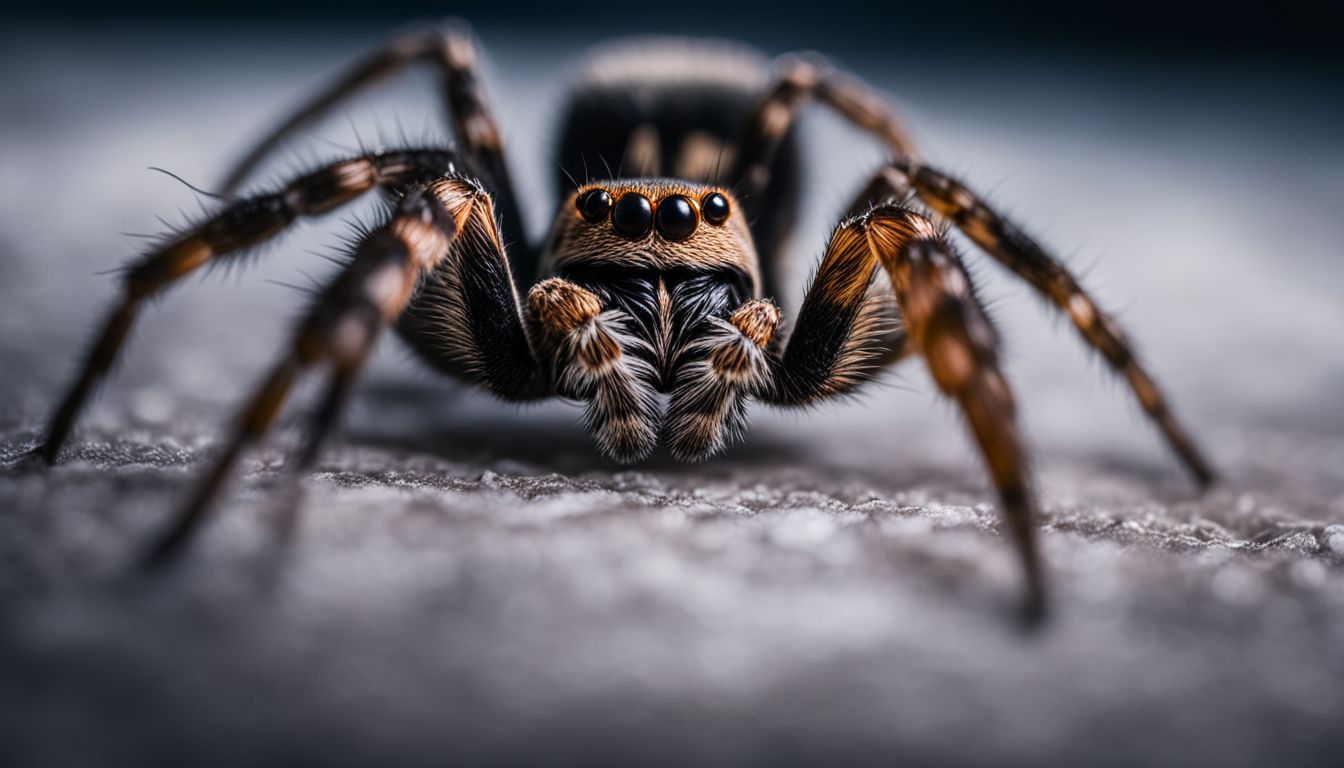
Many people confuse insects and spiders due to their similar size and appearance. However, there are distinct features that can help differentiate between the two, such as the number of legs, body structure, and behavior.
It’s important to understand these differences in order to accurately identify spiders and insects in the wild.
Distinguishing Features of Spiders
Spiders are unique creatures that stand out from insects. These features help us tell them apart.
- Spiders have eight legs. Each leg has seven parts which let them move in all sorts of ways.
- Two body regions exist in spiders. They have a front part called the cephalothorax and a back part named the abdomen.
- Unlike insects, spiders do not have wings or antennae.
- Fangs on spiders are called chelicerae. They use them to bite and inject venom into their prey.
- Pedipalps look like small legs near their mouths. But they are not for walking! Spiders use them to handle food or during mating.
- On their abdomen, many spiders have spinnerets. These organs make silk for webs, nests, or egg sacs.
- Insects breathe with tubes named tracheae, while some spiders also use book lungs for breathing.
- Spiders often have simple eyes in pairs. They can have up to four pairs of these eyes!
Insects That Resemble Spiders
Insects and spiders may look similar to the untrained eye, but there are distinguishing features that set them apart. When it comes to insects that resemble spiders, here are some examples and how to tell the difference:
- Harvestmen: Also known as daddy longlegs, these creatures may look like spiders at first glance due to their long legs and round bodies. However, unlike spiders, harvestmen only have one body segment, while spiders have two.
- Wind Scorpions: These arachnids are often mistaken for spiders due to their appearance, but they belong to a different arachnid order called Solifugae. Unlike true spiders, wind scorpions have large pincer-like mouthparts and lack venom glands.
- Tailless Whip Scorpions: Also known as amblypygids, these arachnids have a spider-like appearance but only possess six legs rather than eight. They also lack silk glands and venomous fangs.
- Pseudoscorpions: These tiny arachnids resemble miniature scorpions but lack a stinger at the end of their abdomen. While they may appear spider-like due to their eight legs, pseudoscorpions are distinct in their own right.
- Mites: Some mites can be mistaken for tiny spiders due to their eight legs and similar body shape. However, mites are arachnids with diverse feeding habits and habitats distinct from those of spiders.
The Exception: Ant Mimicking Spiders
Ant mimicry is a fascinating adaptation that some spiders use to confuse potential predators and prey. These species have evolved to resemble ants in both appearance and behavior, making it difficult for observers to distinguish them from actual ants.
How Ant Mimicry Can Confuse Observers
Ant mimicry in spiders can confuse observers and predators. When spiders raise their forelegs to resemble ant antennae, it tricks others into mistaking them for ants instead of spiders.
This behavior has evolved in over 300 spider species, making it a common strategy that is used to avoid predation. The evolutionary significance of this behavior is not completely understood, but it is believed to have originated as a defense mechanism against birds and other predators that hunt by sight.
The Role of Spider Legs in Predation
Spider legs play a crucial role in capturing and eating prey, such as ticks. These specialized limbs aid in the hunting and feeding process, demonstrating the unique adaptations of spiders in their predatory behavior.
To learn more about the fascinating world of spider anatomy and behavior, continue reading our blog!
How Spiders Capture and Eat Prey such as Ticks
Spiders capture prey like ticks by using silk to spin webs or by directly pouncing on them. They then inject venom into the prey with their fangs to paralyze it and start digesting its insides, making it easier for the spider to consume.
Spiders don’t chew solid food; they suck up the liquefied insides of their prey using their mouthparts.
Additionally, spiders use specialized appendages called palps to sense and taste their prey before attacking. The whole process showcases how spiders are well-equipped predators, utilizing a combination of physical traits and instinctive behaviors to secure and consume their meals without needing conventional chewing or gnawing abilities.
The Importance of Leg Count in Arachnology
Spider legs play a crucial role in their behavior and ecology, making them an important focus in the field of arachnology. Understanding the significance of spider legs can provide valuable insights into their predatory strategies, movement patterns, and overall survival strategies.
Scientific Significance of Spider Legs
Spider legs play a vital role in the scientific study of arachnids, helping researchers understand their behavior and ecology. The unique anatomy of spider legs, with seven distinct segments including the coxa, trochanter, femur, patella, tibia, metatarsus, and tarsus, provides valuable insights into their locomotion and hunting techniques.
Additionally, the presence of pedipalps alongside their eight legs offers further avenues for exploration in understanding mating behaviors and sensory mechanisms in spiders.
Understanding the significance of spider legs also sheds light on evolutionary adaptations within this diverse group of arachnids. By studying these unique appendages and their functions in gas exchange through tracheal systems or respiratory organs like book lungs or tracheae can provide crucial information on how spiders have adapted to different environments over time.
Role of Legs in Spider Behavior and Ecology
The scientific significance of spider legs extends to their crucial role in behavior and ecology. Spider legs are not only essential for movement but also play a vital part in sensing the environment, capturing prey, and communication.
These eight appendages enable spiders to navigate diverse terrains, from forest floors to desert sands, and contribute significantly to their survival. It’s worth noting that spinnerets extrude silk – a unique substance produced by spiders – through which they create webs for shelter, trap prey, or disperse as threads for various purposes.
Spider legs also facilitate the transmission of vibrations from the surroundings to alert the spider about potential threats or opportunities nearby. Furthermore, these remarkable adaptations provide insights into how spiders adapt to different environmental challenges and fulfill their crucial ecological roles as predators within ecosystems.
Conclusion
In conclusion, some spiders have six legs, unlike most of their eight-legged counterparts. This unique characteristic sets them apart but doesn’t change their true nature as arachnids.
Despite this difference in leg count, these six-legged spiders still exhibit typical spider behavior and characteristics. Understanding the distinction between insects and arachnids can help avoid confusion when encountering these exceptional creatures.
Discover how spiders employ their eight legs in the fascinating process of capturing and consuming prey by visiting our detailed article on whether spiders eat ticks.
FAQs
1. How many legs do spiders really have?
Spiders are part of arachnida, and they all have eight walking legs, not six.
2. What are some special body parts of a spider?
A spider has two main body parts: the front part with eyes and mouth called the carapace, and the back part called opisthosoma. They also have a tiny waist area called pedicel.
3. Are there spiders that look like other animals?
Yes! Some spiders, like ant-mimic spiders or Maratus volans which do an interesting dance, can look like ants or even peacocks!
4. Can you tell me something cool about how spiders sense things?
Sure! Spiders don’t just use their eyes to sense things; they also have hairs and organs on their legs to feel around them.
5. Do all spiders make webs in the same way?
Nope! Different kinds of spiders make different webs. Net-casting spiders throw small nets to catch bugs while others might not use webs at all.
6. What’s different about how a jumping spider moves compared to other bugs?
Jumping spiders can leap really far because they push fluid super fast through their long leg-parts when they jump!

